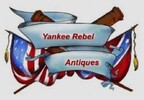 Loading... Please wait...
Loading... Please wait...-
Call us on (973) 810-2976
- My Account
- Gift Certificates
- Items / $0.00
All prices are in All prices are in USD
Categories
- Home
- Sold, Hold, Layaway items
- Revolutionary War medical scarificator with partial ID, as in the Smithsonian Museum (ON HOLD,M)
Revolutionary War medical scarificator with partial ID, as in the Smithsonian Museum (ON HOLD,M)
Out of Stock
Product Description
This is another early piece coming out of a 60-year collection of French & Indian War, Revolutionary War, and War of 1812 artifacts. Much of the collection was artillery related, but also there is a large portion of personal and medical items. Being offered is a Revolutionary War medical scarificator (fleam). It is brass and measures 1 ¼” x 1 ¼” x 1 ¼” and has 16 openings for the blades. It is nicely engraved on the top with what appears to be “F.D. Wien”.
Going back as far as the 17th century, there were multi-bladed bleeders called scarificators. They became very popular in the 18th and 19th centuries. Like spring lancets, they came in every size and description.
With these instruments, the cases are brass, and the mechanism and blades are steel. Many had a depth adjuster for the blades on the top and the blades would be cocked by the lever on top. The release switch is on the side. This allowed the blades to swing around, making multiple cuts at once.
Its rationale was based on the belief that removing blood eliminated “impure” fluids. From antiquity until the beginning of the 19th century, bloodletting was considered a panacea, and it was the most common and versatile form of medical treatment. Not only was it believed to cure the sick, but also to promote vigor in the healthy patients.
In 1775, the colonies had about 3,500 doctors. The leading Patriot physician, Dr. Benjamin Rush of Philadelphia, wrote a manual on keeping soldiers healthy, but diseases like smallpox, typhus, and malaria killed 10 times more men than injuries sustained in battle.
Hospitals were short-staffed and lacked supplies, medicine, and nutritious food. Conditions were primitive, surgical tools for extracting bullets, amputating limbs, and drawing blood were not sterilized. Many men died from minor, infected wounds. In time, better hospitals were designed, improving chances for recovery.
This instrument is in nice condition. I did not attempt to operate it because I don’t want to risk damaging it. I am sure that if desired, it could be opened, cleaned and oiled. There is one of these scarcificators in the Smithsonian National Museum of American History (see pictures).
This collection began in the late 1950s and was created by private acquisitions, closed museums, diggers, and lake divers. The collector meticulously displayed and cataloged every piece along with any known provenance.
This is the first time this box has been on the open market. It definitely merits a place in an advanced collection or museum. As with all the pieces in this esteemed collection, a Certificate of Authenticity will be included. This piece would make a great addition to any period display.




